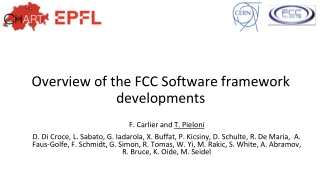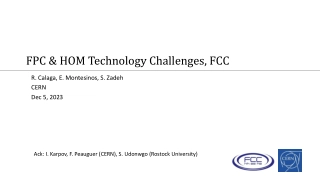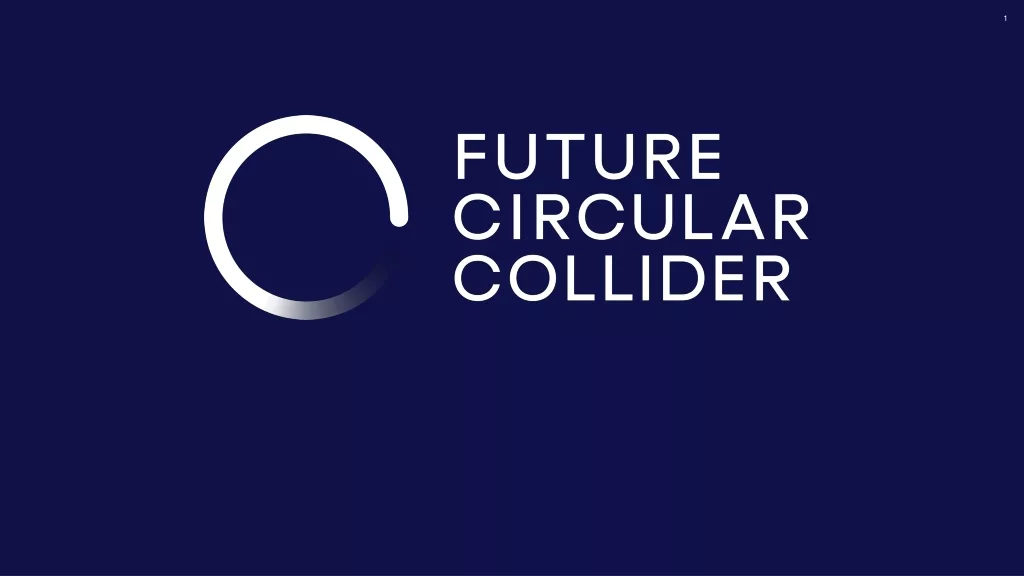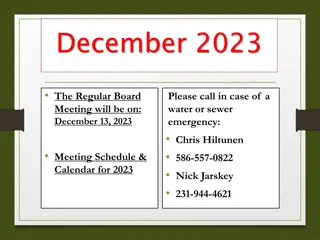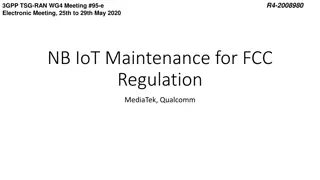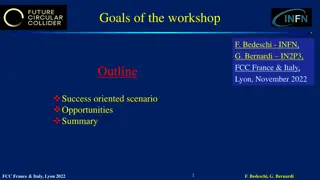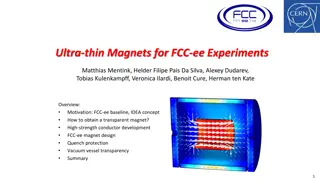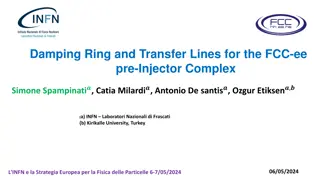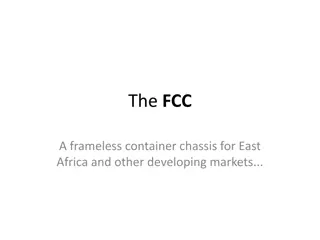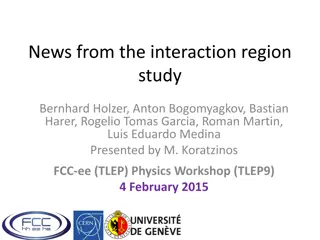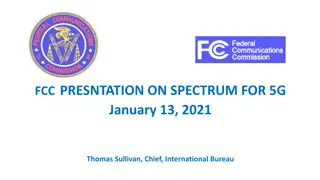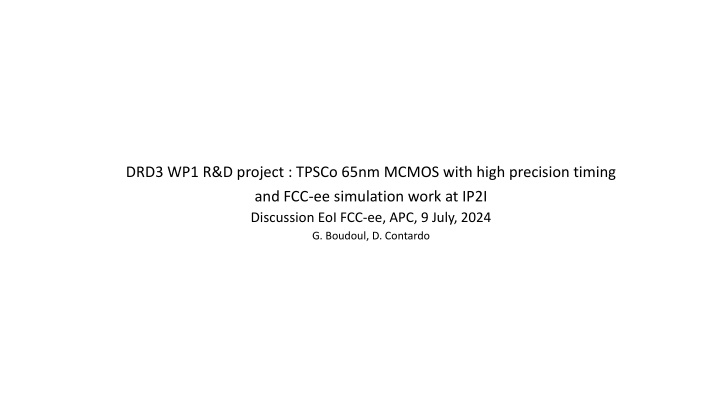
High Precision Timing R&D Project for FCC-ee Simulation Work
Explore the TPSCo 65nm MCMOS project focusing on high precision timing for outer tracking and digital electromagnetic calorimeter layers at FCC-ee. The project aims for 4D tracking with enhanced timing capabilities and synergies with existing R&D projects.
Download Presentation

Please find below an Image/Link to download the presentation.
The content on the website is provided AS IS for your information and personal use only. It may not be sold, licensed, or shared on other websites without obtaining consent from the author. If you encounter any issues during the download, it is possible that the publisher has removed the file from their server.
You are allowed to download the files provided on this website for personal or commercial use, subject to the condition that they are used lawfully. All files are the property of their respective owners.
The content on the website is provided AS IS for your information and personal use only. It may not be sold, licensed, or shared on other websites without obtaining consent from the author.
E N D
Presentation Transcript
DRD3 WP1 R&D project : TPSCo 65nm MCMOS with high precision timing and FCC-ee simulation work at IP2I Discussion EoI FCC-ee, APC, 9 July, 2024 G. Boudoul, D. Contardo
2 DRD3 WP1 R&D project : TPSCo 65nm MCMOS with high precision timing for outer tracking layers* or inner high granularity digital electromagnetic calorimeter layers, and ultimately 4D tracking, in a detector at the FCC-ee** (full project description submitted to DRD3 WP1) At large radii, precision timing ( 50 ps) will allow ToF PID and also ultra-high granularity in a pre-shower electromagnetic calorimeter section with a compact design The constraints in position resolution, radiation length, and rates are relaxed at these radii, allowing to envisage high precision timing, despite its subsequent increase in power consumption. Eventually, the project could extend to 4D tracking in layers at lower radii depending on the system radiation length that would be achieved. * to some extend this work can aplly to layers in a full silicon tacker or in the layers surrounding a large gas volume detector w/o precise timing ** some intermediate projects, ALICE-3, LHCb-2 Belle-3 foresee central tracking with MCMOS
3 DRD3 WP1 R&D project : TPSCo 65nm MCMOS with high precision timing deployment and participants 1ststage - foundry submission Investigate TPSCo 65 nm performance for high precision timing (w/o amplification) the study can be done on few pixels matrices, with pitch down to < 10 m & other configuration parameters (electrode size, epitaxial layer thickness...) pixels could be readout indivually through waveform digitisation and with different grouping to a fast preamplification and discrimination readout. the implementation could build on work already started in the first TPSCo 65 nm ER runs, & possibly benefit from synergies with R&D foreseen for the ALICE-3 VD and the Fine-Pitch CMOS Sensors with Precision Timing" DRD3 project. Readout architecture implementing high precision timing ToA and ToT TDC feature in a pixel matrix of O(1) cm2, at the end of column and configurability of the pixel grouping at the amplification discrimination stage this part can benefit of synergies (or be merged) with the Fine-Pitch CMOS Sensors with Precision Timing" DRD3 project (targeting other applications than a VD detector)
4 DRD3 WP1 R&D project : TPSCo 65nm MCMOS with high precision timing deployment and participants 2nd stage foundry submission demonstrator including both sensor analog part and the readout architecture in a reticule size pixel matrix and considering low power consumption and later extension to large size (stitched) sensors sensors w/amplification could be considered in synergies with the CMOS Active SenSor with Internal Amplification - CASSIA" and the "Large electrode sensors with intrinsic amplification for ultimate timing performance" DRD3 projects if they evolve toward TPSCo 65nm 3rd stage - foundry submissions Large size stitched sensor prototype, benefiting form ITS3 and ALICE-3 developments and progress in DRD7 on low power comsumption Investigation of 3D wafer to wafer stacking for separation of the sensor analog and digital part of the readout Further related R&D contributions being investigated at IP2I contribution to mechanics and integration Can build on experience in design of central tracking mechanical structures, integration & characterization implementing an integrated approach with modern AITV methods with deployment in mockups and prototypes
5 FCC-ee simulation work develop sensor signal digitizer* for full simulation and apply to PED studies Provide realistic simulation to : evaluate rate requirements (and physics inputs for readout architecture design) evaluate sensor performance parameters on reconstruction and physics performance optimise tracker configuration Software development : Key4hep framework EDM4hep data formats Geometry description built with DD4 hep Deployment 1st version of cluster size (w/o simulation of signal collection) for initial FCC-ee feasibility studies 2nd version (w/ electron collection) by end 2024 Interfacing to physics and background simulation in close collaboration with the software and computing FCC PED team PED studies starting early-2025, in collaboration with IPHC


